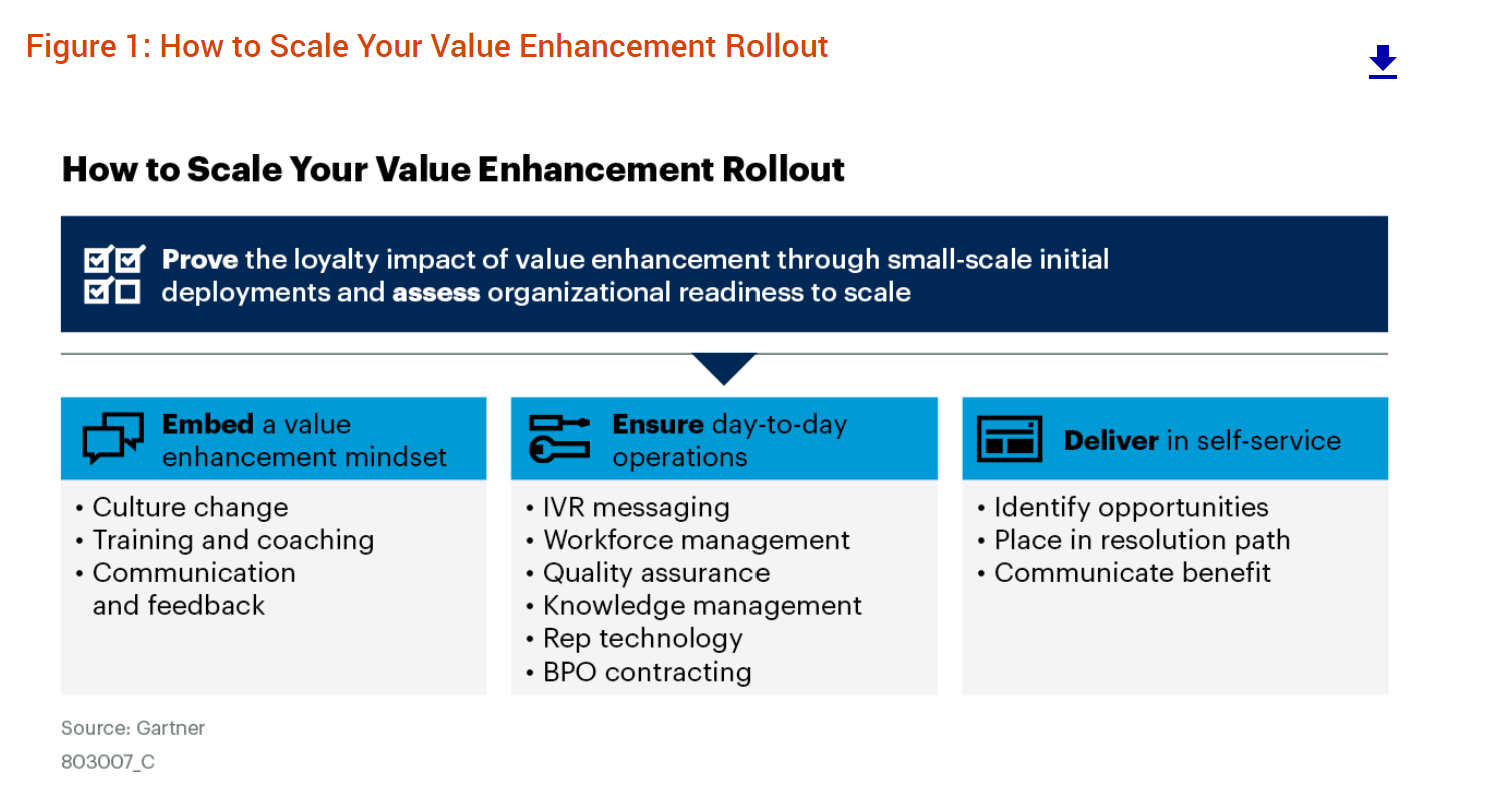Growth is the number one priority for the C-Suite in 2024, and every organizational function is expected to play a role in its delivery. A recent Gartner survey found that driving customer loyalty is a top priority for 93 percent of customer service and support leaders in 2024.
Service and support functions have increasingly adopted value enhancement strategies, which involve using service interactions to provide information about the product the customer purchased that increases the product's perceived value. This strategy enables the service and support function to evolve from a focus on low-effort issue resolution to mitigate customer disloyalty toward a function that also contributes to loyalty growth.
While leaders are seeing more of their initial deployments of value enhancement generate ROI, most strategies to date have focused on small-scale use cases in assisted-service channels. So how can service and support organizations expand rollout across the service and support function, delivering value enhancement and boosting customer loyalty through assisted and self-service channels?
Here are four basic steps that can be implemented easily:

1. Prove impact and organizational readiness.
For value enhancement to succeed at scale, leaders should do the following:
- Review value enhancement score (VES) results from initial deployments to confirm effective delivery and loyalty benefits.
- Ensure that target areas of the service and support organization for rolling out value enhancement meet the prerequisite of delivering consistent low-effort issue resolution.
2. Embed a value enhancement mindset across the service and support function.
Leaders should pivot to a value-enhanced service mindset through the following:
- Culture change - Efficient issue resolution is the service and support function's bread and butter. But now, we're asking agents and self-service channel teams to also educate customers on new ways to realize value from a product or service. Leaders should outline the desired behaviors they want to ingrain and then operationalize the culture change through training, coaching, and tool enablement.
- Training and coaching - Service and support leaders will need to train and coach teams at scale to successfully deliver value enhancement, investing in skillset development such as discovering underlying customer needs and identifying where value enhancement is appropriate.
- Ongoing communication and feedback - Leaders must reinforce the impact of value enhancement to key stakeholders throughout the strategy's rollout and collect feedback to continuously refine their delivery of value enhancement.
3. Adjust day-to-day operations to support and promote increased delivery of value enhancement.
Because value enhancement might be an entirely new concept to customers, reps, and stakeholders, service and support leaders should be proactive about managing the day-to-day impact it will have on these teams. This can be done through customer communication to encourage engagement in value enhancement, optimization of workforce management practices, rep performance requirements, and updating of quality scorecards to reflect customer feedback to the rollout.
4. Deliver value enhancement at scale through self-service.
Self-service represents the greatest opportunity to scale value enhancement and increase customer loyalty, offering greater scalability with a larger customer base at a lower cost. To date, service and support leaders have not yet maximized the potential of value enhancement, instead focusing on assisted-service channels. This approach only serves to widen the gap between the two channel experiences, limiting the service function's ability to drive business growth.
As a next step, leaders and teams should do the following:
- Highlight service and support issues where self-service can provide value-enhancing information to allow customers to find greater value from a product.
- Ensure value-enhancing information is placed within customers ' issue resolution paths, increasing the possibility that they will discover this additional insight in their self-service journeys.
- Confirm that value-enhancement statements in self-service outline how they benefit the customer.
Christopher Sladdin, Jonathan Schmidt, and Rupinder Chandhok are analysts with the Gartner Customer Service and Support practice, covering topics such as voice of the customer, customer experience, service and support strategy and leadership, and more.